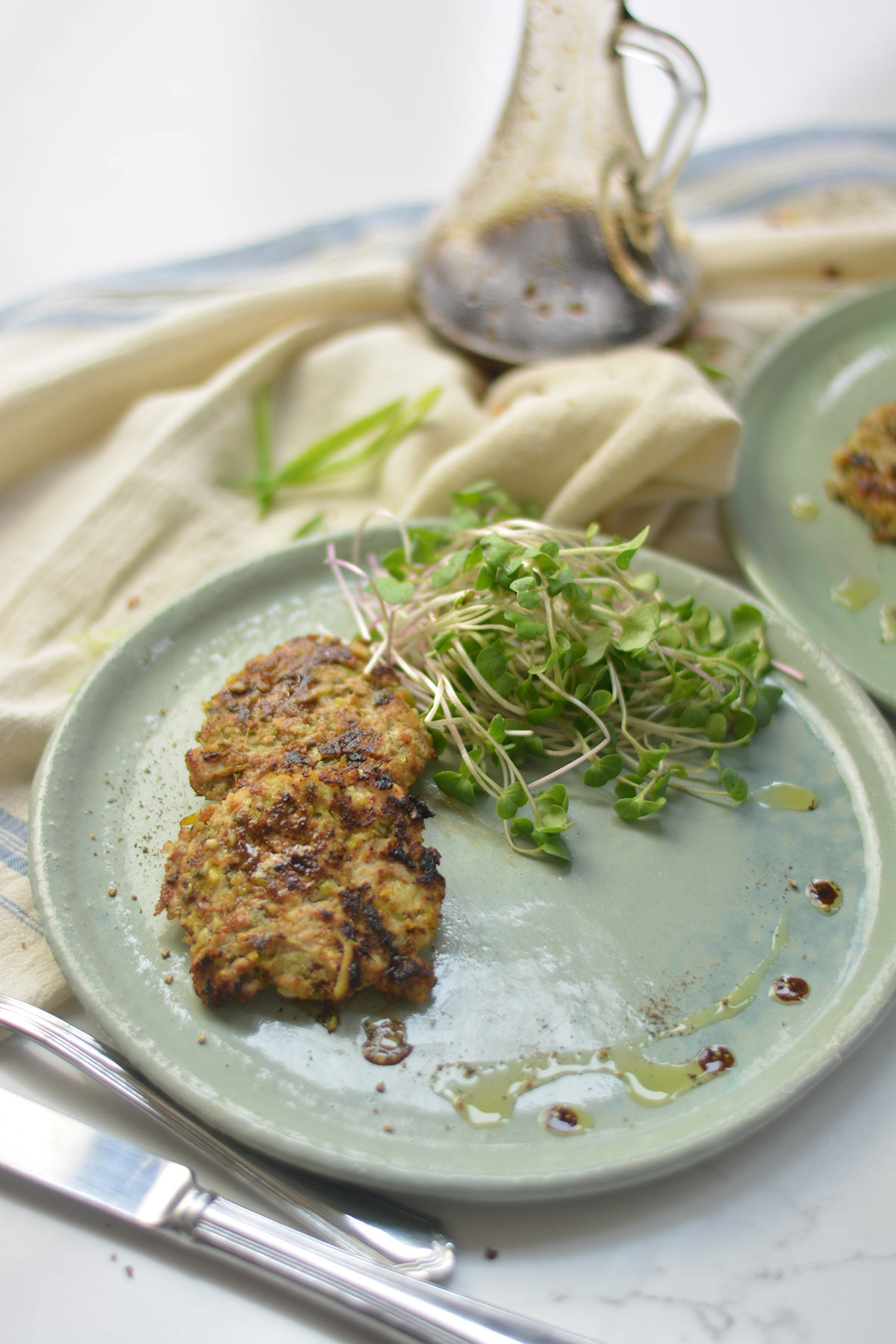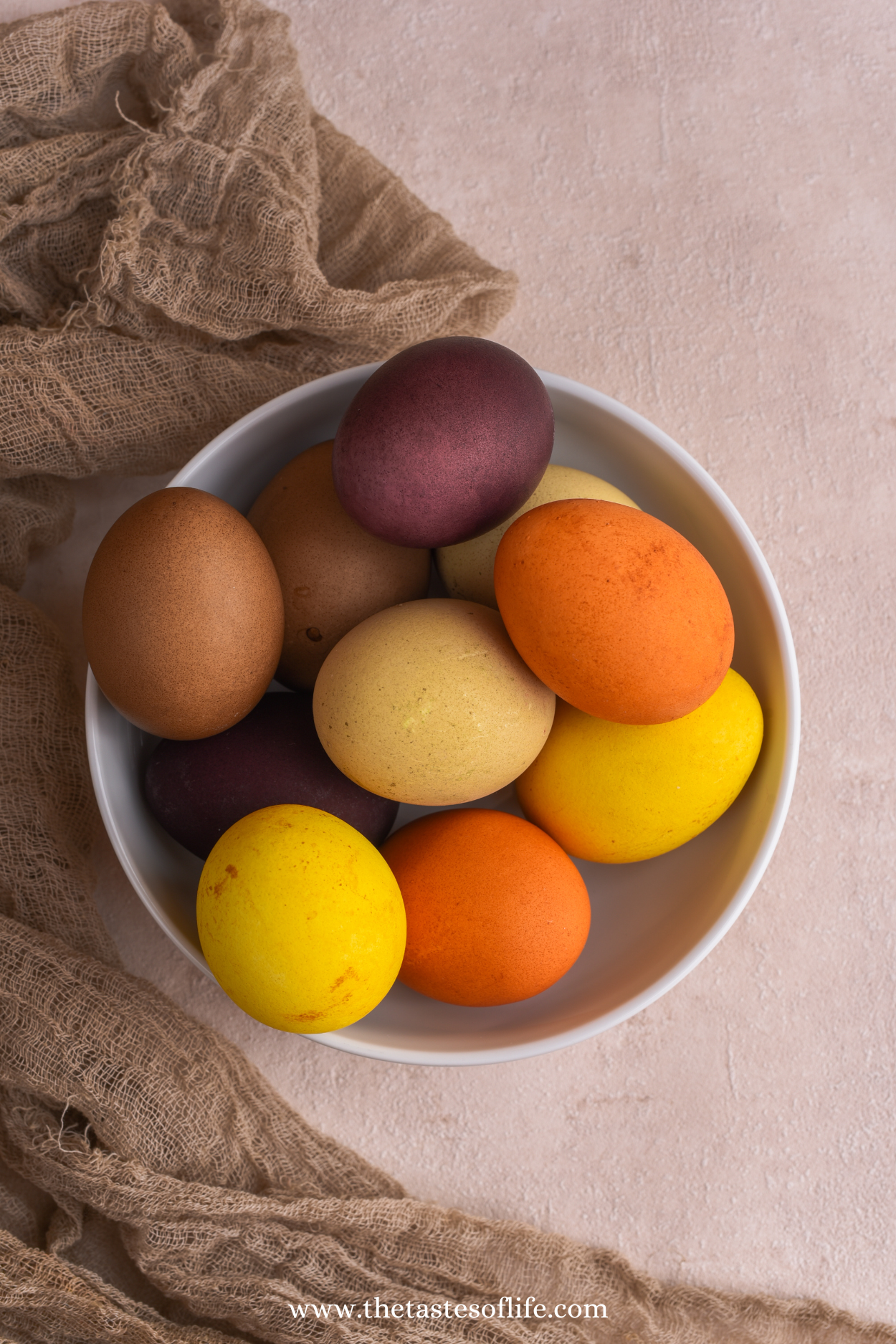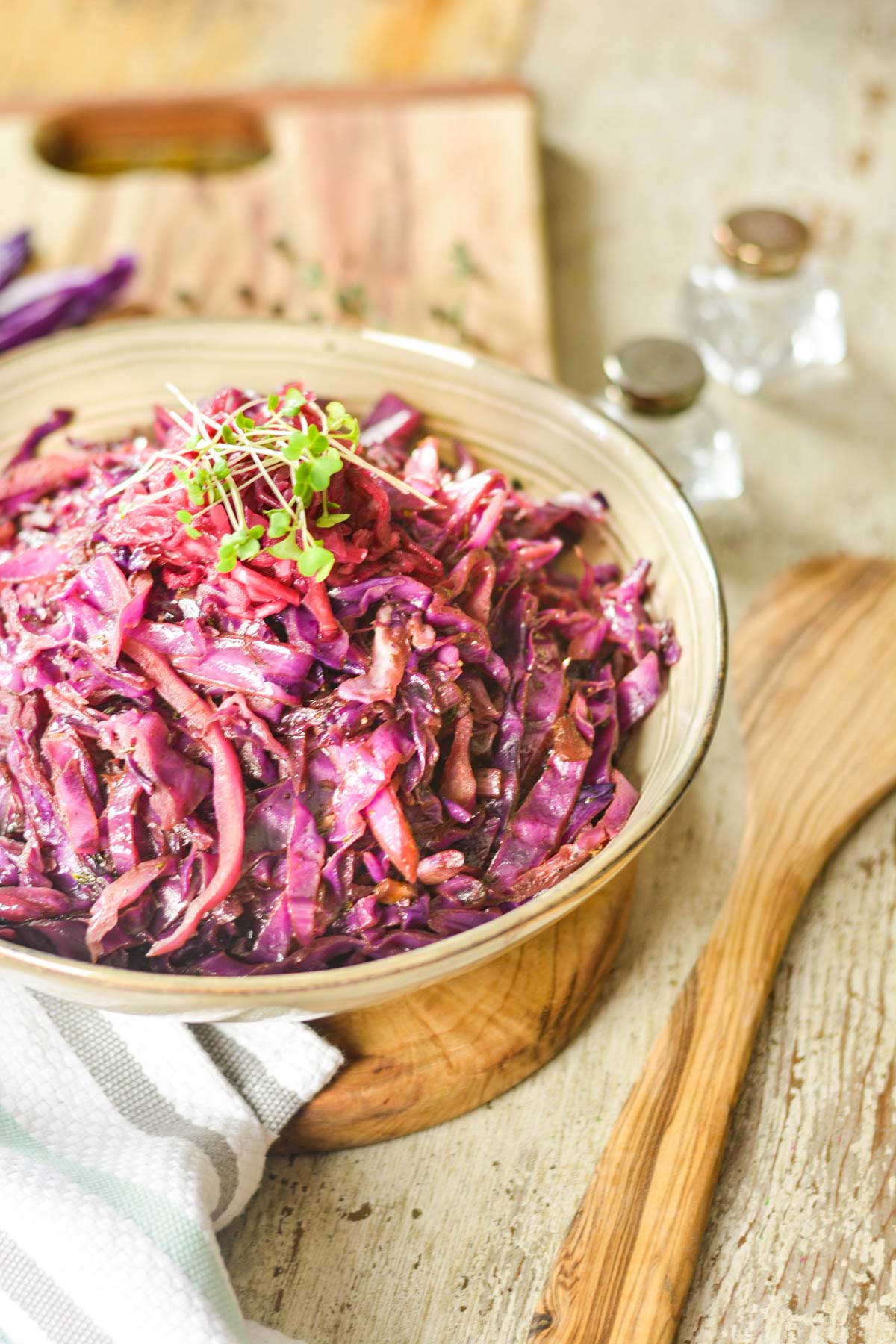How To Make Easy Homemade Chicken Stock Recipe
Sharing is caring❤️. Learn how to make this easy homemade chicken stock that will give your soups and stews a deep and rich flavor. You just need some simple ingredients for this delicious liquid gold elixir!

Learn How To Make Easy Chicken Stock
Making chicken stock is one of those cherished rituals in my family that has been passed down through generations. It’s not just about creating a flavorful base for our favorite dishes; it’s about preserving tradition and bringing everyone together around the table. We always had chicken stock on hand, so we could use it to make many dishesh. Making chicken stock is easy, and ingredients are easy to find at the store. You can also create it from scraps and leftover chicken carcass. You can make it in a large pot or a slow cooker.
I like to use the recipe my family used to make with onion, carrot, leek, parsnip, and celery root (I know this vegetable is not that popular in the US, But I invite you to check it out because it has a great flavor), along with garlic, fresh herbs or spices. But honestly, you can add any vegetable you like, even sweet potatoes, if you want it sweeter. I also like roasted garlic or carmelized onion when I need a rich and deep flavor. These humble ingredients hold the key to unlocking our stock’s deep, comforting flavors.
Making homemade chicken stock is not only easy, but it is also a way to save money. Just use up the ingredients you have on hand and create something nourishing and delicious while you’re at it. Use it in soups like . Sip on a cup of warm stock when you’re under the weather, or freeze it in an ice cube tray for sauces or other recipes. Use for pan sauces, soup recipes, and other chicken stock recipes.

Why Make Homemade Chicken Stock
There are several reasons why making homemade chicken stock is advantageous:
- Flavor Control: Homemade chicken stock allows you to control the flavor profile and seasoning according to your preferences, and it is so much better than store-bought chicken stock.
- Quality Ingredients: When making your chicken stock, you have control over the ingredients’ quality. You can choose high-quality chicken, fresh vegetables, and herbs.
- Nutritional Benefits: Homemade chicken stock can be more nutritious than store-bought varieties, especially if you use organic ingredients and avoid additives and preservatives often found in commercial stocks.
- Cost-Effective: While homemade chicken stock requires some time and effort, it can be more cost-effective in the long run compared to purchasing pre-made stocks, especially if you use leftover chicken bones and vegetable scraps.
- Versatility: Homemade chicken stock is incredibly versatile and can be used as a base for various soups, stews, sauces, and risottos, adding depth of flavor to your dishes.
- Reduced Waste: Making chicken stock at home is a great way to reduce food waste. You can utilize leftover chicken bones, vegetable scraps, and herb stems that might otherwise be discarded.
- Customization: Homemade chicken stock allows for customization based on dietary restrictions or preferences. You can make it gluten-free, low-sodium, or adjust the ingredients to accommodate specific dietary needs.
What’s in Chicken Stock?
Basic chicken stock is just bones and water, but adding vegetables and herbs increases the stock’s flavor, complexity, and nutritional value. I often save scraps from chopping vegetables when I make other dishes and put them in the freezer. Most of the ingredients are already there when I’m ready to make stock. For this best chicken stock, I used:
- Chicken bones or carcasses: You can use leftover bones from a roasted chicken or purchase bones specifically for making stock.
- Water: To simmer the ingredients and extract their flavors.
- Vegetables: Common vegetables used in chicken stock include onions, carrots, celery, and sometimes garlic.
- Herbs and spices: Bay leaves, parsley, fresh thyme, and peppercorns commonly flavor the stock.
- Acid: A small amount of acid, such as vinegar or lemon juice, helps extract minerals from the bones and vegetables.
- Salt: You may add salt to taste, although you can leave it out initially and adjust the seasoning later when using the stock in recipes.

How to Make Chicken Stock
- Prepare the Ingredients: Gather your chicken bones or carcasses, vegetables (such as onions, carrots, and celery), herbs (like parsley and thyme), spices (such as peppercorns and bay leaves), water, and any other aromatics you’d like to include.
- Roast the Bones (Optional): If desired, you can enhance the flavor of your stock by roasting the chicken bones in the oven until they turn golden brown. This step is optional but can add depth to the flavor of the stock.
- Combine Ingredients in a Pot: Place the chicken bones, vegetables, herbs, spices, and acid in a large stockpot or Dutch oven. Cover with enough cold water to fully submerge the ingredients, leaving a couple of inches of space at the top of the pot.
- Bring to a Simmer: Place the pot over medium heat and slowly bring the mixture to a gentle simmer. Skim off any foam or impurities that rise to the surface with a ladle or slotted spoon.
- Simmer Gently: Once the stock reaches a simmer, reduce the heat to low to maintain a gentle simmer. Cover the pot partially with a lid, leaving it slightly askew to allow steam to escape.
- Cook for Several Hours: Let the stock simmer for at least 2-3 hours or up to 6-8 hours for a richer flavor. The longer the stock simmers, the more flavorful it will become.
- Strain the Stock: Use a fine-mesh strainer or cheesecloth to strain the liquid, removing all solids and impurities. Discard the solids.
- Cool and Store: Allow the stock to cool to room temperature, then transfer it to containers for storage. You can refrigerate the stock for up to 5 days or freeze it for longer-term storage. Be sure to leave some space at the top of the containers to allow for expansion if freezing.
- Use or Freeze: Use the homemade chicken stock as a base for soups, stews, sauces, or risottos, or freeze it in smaller portions in large ice cube trays for future use.
What is The Difference Between Chicken Stock and Chicken Broth?
Ingredients:
- Chicken stock is typically made by simmering chicken bones or carcasses with vegetables, aromatics, and herbs in water. It tends to have a richer, more intense flavor due to the longer cooking time and the presence of bones.
- Chicken broth is made by simmering chicken meat (often with bones) with vegetables, aromatics, and herbs in water. It tends to have a lighter flavor compared to stock.
Cooking Time:
- Stock is usually simmered for a longer period, ranging from 4 to 6 hours or even more. This extended cooking time allows for the extraction of more flavor and nutrients from the bones.
- Broth is typically simmered for a shorter time, usually around 1 to 2 hours. The shorter cooking time results in a lighter flavor and less extraction of gelatin from the bones.
Flavor and Texture:
- Chicken stock tends to have a richer, more pronounced flavor and a thicker, more gelatinous texture due to the collagen released from the bones during cooking.
- Chicken broth has a lighter flavor and thinner consistency compared to stock.
Use in Cooking:
- Because of its richer flavor and thicker texture, chicken stock is often used as a base for hearty soups, stews, sauces, and risottos, where a more robust flavor is desired.
- Chicken broth is versatile and can be used as a base for many dishes, including lighter soups, sauces, gravies, and braises.
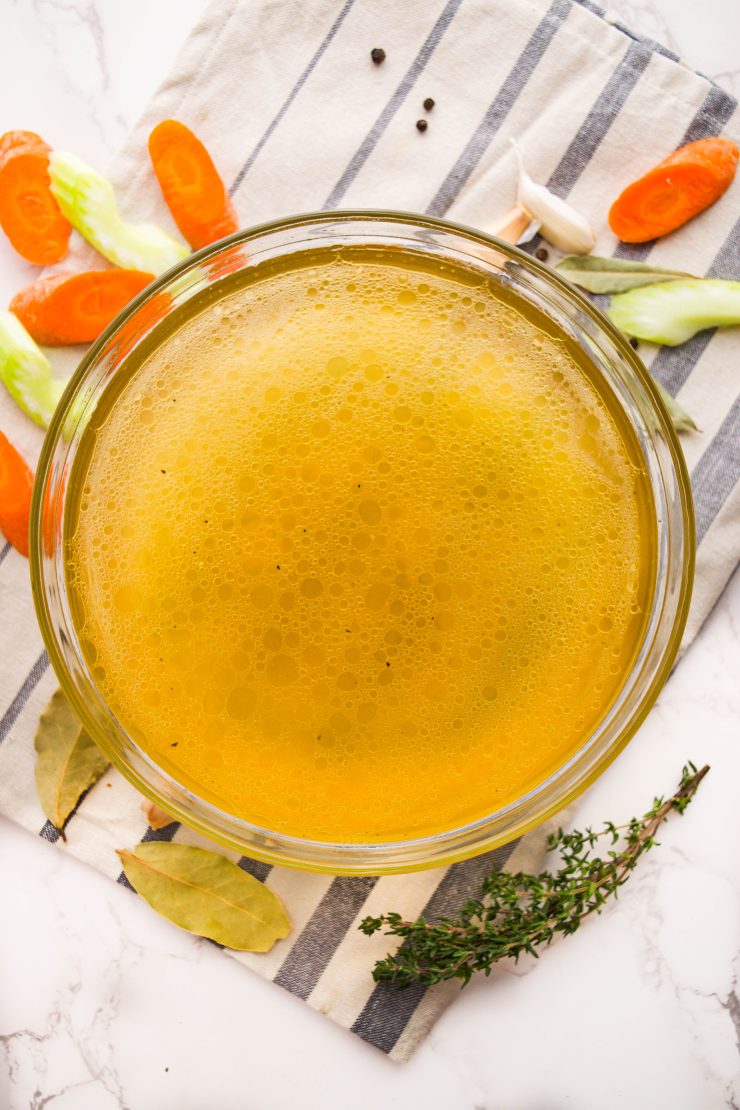
Chicken Stock Variations
While traditional chicken stock is delicious on its own, you can add various ingredients to create different flavor variations. Here are a few ideas:
- Asian-Inspired: Add ginger, garlic, green onions, and a splash of soy sauce or fish sauce to give the stock an Asian twist. You can also throw in some dried shiitake mushrooms for extra depth of flavor.
- Herbaceous: Incorporate an abundance of fresh herbs such as parsley, thyme, rosemary, and sage for a fragrant and herbaceous stock. This variation works well in dishes like chicken pot pie or herb-infused risottos.
- Spicy: For a kick of heat, add sliced jalapeños, chili flakes, or a dash of hot sauce to the stock. You can also throw in some whole peppercorns or dried chili pepper for an extra punch.
- Citrusy: Brighten up the flavor of the stock with the zest of lemon, lime, or orange. Simply add strips of citrus peel (avoiding the bitter white pith) during the simmering process to infuse the stock with a subtle citrusy aroma.
- Umami: Enhance the savory umami flavor of the stock by adding ingredients like dried mushrooms (such as porcini or shiitake), seaweed (such as kombu), or a splash of Worcestershire sauce. These ingredients will deepen the complexity of the stock and add richness to your dishes.
- Roasted: For a deeper flavor, roast the chicken bones and vegetables in the oven before simmering them in water. This will intensify the flavor of the stock and give it a richer, more robust taste.
- Curried: Infuse the stock with warm, aromatic spices like curry powder, turmeric, cumin, and coriander for a flavorful base that’s perfect for curries, soups, and stews. You can also add coconut milk for a creamy finish.
- Miso: Add a spoonful of miso paste towards the end of cooking to give the stock a savory, slightly sweet flavor with a hint of fermentation. Miso adds depth and complexity to the stock and pairs well with Asian-inspired dishes.
Here are Some Tips to Help you Make Delicious Chicken Stock:
- Start with Quality Ingredients: Use high-quality chicken bones or carcasses, preferably from organic or free-range chickens. Fresh vegetables and herbs will also contribute to a flavorful stock.
- Add Chicken Feet: If you want a more gelatinous stock, add some chicken feet!
- Simmer Low and Slow: Bring the stock to a gentle simmer over low to medium-low heat. Avoid boiling vigorously, as this can cause the stock to become cloudy. A slow, gentle simmer allows the flavors to grow gradually, resulting in a clear, flavorful stock.
- Skim the Surface: As the stock simmers, skim off any foam or impurities that rise to the surface with a spoon or ladle. This will help keep the stock clear and free of any unwanted flavors.
- Don’t Over-Salt: It’s best to wait until the end of cooking to add salt to the stock, as it can concentrate as the liquid reduces. Start with a small amount and adjust the seasoning to taste once the stock is finished.
- Use Cold Water: Start with cold water, as this allows for gradually releasing flavors from the ingredients. Avoid using hot water, as it can cause the proteins in the chicken to coagulate and result in a cloudy stock.
- Don’t Stir Too Much: Avoid stirring too vigorously, as this can agitate the ingredients and lead to a cloudy stock.
- Strain Carefully: Once the stock has finished simmering, strain it through a fine-mesh sieve or cheesecloth to remove any solids and impurities. Press gently on the solids to extract as much liquid as possible without forcing any solids through the sieve.
- Cool Quickly: After straining, cool the stock as quickly as possible to minimize the risk of bacterial growth. You can do this by placing the pot in an ice bath or transferring the stock to shallow containers for faster cooling.
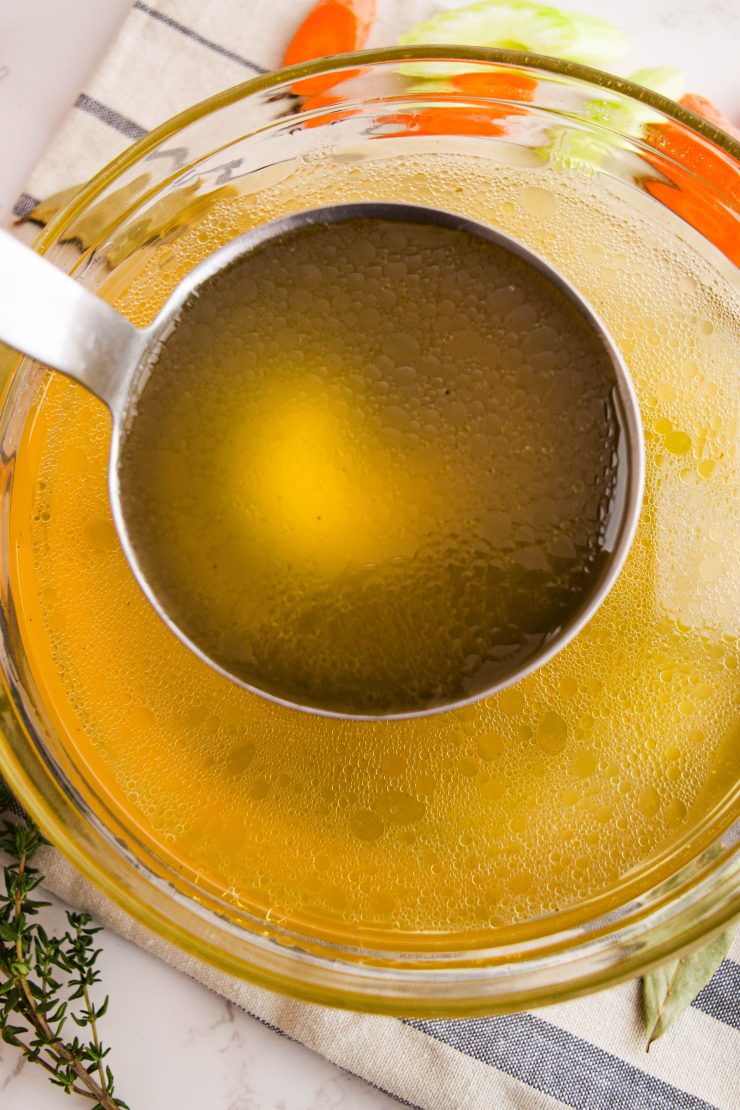
How to Make a Chicken Broth in Slow Cooker
- Prepare the Ingredients: Roughly chop the vegetables (onions, carrots, celery) and garlic cloves if using. You can also leave the vegetables whole if preferred. Tie the fresh herbs together with kitchen twine to create a bouquet garni.
- Combine Ingredients in the Slow Cooker: Place the chicken bones or carcasses, chopped vegetables, garlic (if using), bouquet garni of herbs, and a handful of peppercorns in the slow cooker.
- Add Water: Pour enough water into the slow cooker to cover the ingredients by about 1-2 inches. Be careful not to overfill the slow cooker.
- Season (Optional): If desired, you can add salt to taste at this stage. Remember that you can always adjust the seasoning later, so it’s okay to start with a smaller amount.
- Cook on Low Heat: Cover the slow cooker with the lid and set it to cook on low heat. Let the broth simmer gently for 8-10 hours or overnight. Cooking on low heat for a longer period allows the flavorful chicken stock.
- Skim Foam: Occasionally skim any foam or impurities that rise to the surface of the broth with a spoon or ladle. This helps keep the broth clear and free of any unwanted flavors.
- Strain the Broth: Once the broth has finished cooking, carefully strain it through a fine-mesh sieve or cheesecloth to remove the solids and impurities. Press down gently on the solids to extract as much liquid as possible.
- Cool and Store: Allow the broth to cool to room temperature before transferring it to containers for storage. You can refrigerate the broth for up to 5 days or freeze it for longer-term storage. Be sure to leave some space at the top of the containers to allow for expansion if freezing.
- Use or Freeze: Use the homemade chicken broth as a base for soups, stews, sauces, or risottos, or freeze it in smaller portions for future use.
Making this homemade stock in a slow cooker is a simple and hands-off process that results in a delicious and flavorful stock, perfect for adding depth to your favorite dishes. Adjust the ingredients and seasoning according to your preferences, and enjoy the homemade goodness!
Use This Chicken Stock In:
Please let me know how it turned out for you! Leave a comment below and share a picture on Instagram with the hashtag #thetastesoflifeholisticblog

How To Make Easy Homemade Chicken Stock Recipe
Ingredients
- 1 Chcicken carcass
- 3 Carrots
- 1 Leek
- 1 Parsnip
- 1 Onion
- 3 Celery stacks
- 1 Celery root Medium
- 4 cloves Garlic
- 1 tbsp Apple Cider Viengar
- Salt To taste
- Water
Instructions
- Prepare the Ingredients: Gather your chicken bones or carcasses, vegetables (such as onions, carrots, and celery), herbs (like parsley and thyme), spices (such as peppercorns and bay leaves), water, and any other aromatics you'd like to include.Roast the Bones (Optional): If desired, you can enhance the flavor of your stock by roasting the chicken bones in the oven until they turn golden brown. This step is optional but can add depth to the flavor of the stock.Combine Ingredients in a Pot: Place the chicken bones, vegetables, herbs, spices, and acid in a large stockpot or Dutch oven. Cover with enough cold water to fully submerge the ingredients, leaving a couple of inches of space at the top of the pot.Bring to a Simmer: Place the pot over medium heat and slowly bring the mixture to a gentle simmer. Skim off any foam or impurities that rise to the surface with a ladle or slotted spoon.Simmer Gently: Once the stock reaches a simmer, reduce the heat to low to maintain a gentle simmer. Cover the pot partially with a lid, leaving it slightly askew to allow steam to escape.Cook for Several Hours: Let the stock simmer for at least 2-3 hours or up to 6-8 hours for a richer flavor. The longer the stock simmers, the more flavorful it will become.Strain the Stock: Use a fine- sumesh strainer or cheesecloth to strain the liquid, removing all solids and impurities. Discard the solids.Cool and Store: Allow the stock to cool to room temperature, then transfer it to containers for storage. You can refrigerate the stock for up to 5 days or freeze it for longer-term storage. Be sure to leave some space at the top of the containers to allow for expansion if freezing.Use or Freeze: Use the homemade chicken stock as a base for soups, stews, sauces, or risottos, or freeze it in smaller portions in large ice cube trays for future use.


